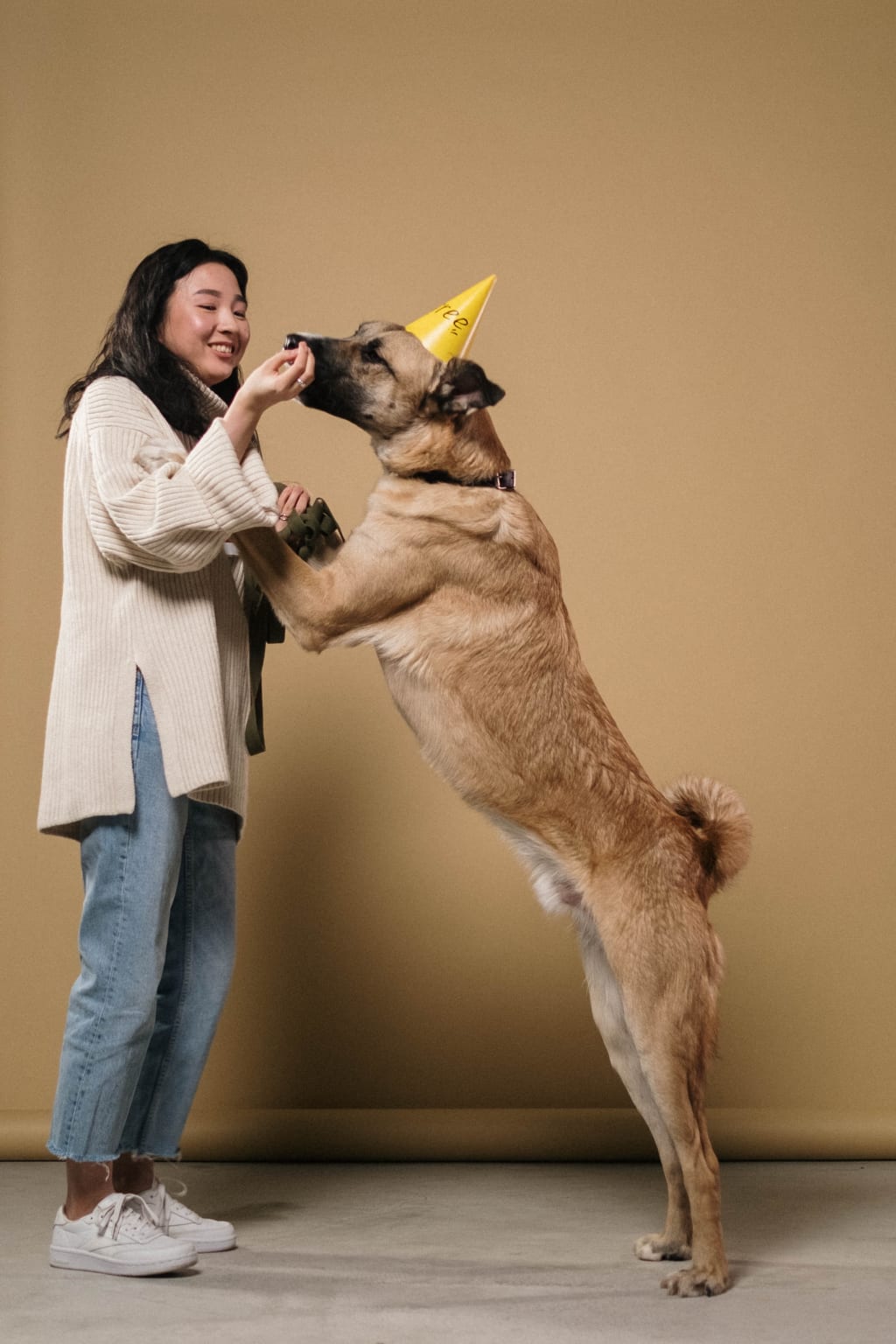
Training enhances your relationship with your dog and enriches the bond you establish with him throughout the years. Once you learn how to communicate with each other, you will get along much better. Here are 9 basic dog-training steps for beginners:
1. Use Positivity
Your dog will respond to your direction if you make it fun. Animal behaviorists believe that the old ways of harsh corrections may work once or twice, but they are often inhumane and ineffective in the long run. Your dog will not understand why you are angry with him.
A year-long study by the University of Pennsylvania, published in the journal Applied Animal Behavior Science (Elsevier), showed that aggressive dogs who were trained with aggressive, confrontational, or aversive training techniques, such as being stared at, growled at, rolled onto their backs, or hit, continued their aggressive ways. Non-aversive training methods, such as exercise or rewards, were very successful in reducing or eliminating aggressive responses.
Positive reinforcement lets your dog know that you are pleased with him, and he will repeat that behavior the next time. Rewards can consist of food, toys, or petting depending on what your dog responds to best. Once he gets it, reward him with food, toys, or petting only some of the time (but verbally praise him every time). This way he’ll work hard to please you, hoping that he’ll receive a reward.
2. Keep Training Sessions Short
Begin teaching your dog good manners a few days after he’s had a chance to settle into the household. Keep your training lessons short—about 10 to 15 minutes at each session. You can repeat the session later on in the same day, but each one should be brief. Plan to engage in several training sessions a day because no puppy learns to do something perfectly in only one take.
3. Use Small Treats
It’s a good idea to give him some small treats as rewards for training. You can use soft commercial food treats sized for puppies, pieces of string cheese, or small pieces of cut-up hot dog that he can swallow right away. Avoid hard, crunchy treats because they take a while to chew. Give treats to your puppy immediately—within half a second of him completing the desired behavior. The faster you confirm the behavior you want, the easier it is for your puppy to understand what you’re trying to teach him. When you give the reward, follow it up by saying “Good boy!”
Avoid the trap of handing out treats during a training session just because your puppy looks cute. He will work harder to please you if he knows that he’s getting a reward than if he hasn’t earned it. If he doesn’t do something you like, don’t yell or punish. Simply withhold the reward.
4. Say a Cue Word Only Once
Say a cue word, like “sit” or “down,” only once. Dogs are smart, so they hear your command and can follow it the first time. Repeating the cue word multiple times doesn’t help your pup sharpen his listening skills, and like a teenager, he’ll tune you out.
5. Schedule Training Before Meals
Schedule your training session before your dog’s regular meal. This way he may pay closer attention to the instructions so that he can earn a tasty bite.
6. Choose a Training Time With No Distractions
Choose a time for training when no one will interrupt you and you don’t feel rushed. Turn your cell phone off and forget about answering the doorbell if it rings. This will give you quality time to devote to the training process.
For the first few sessions, pick a room in the house that’s large enough to move around. When your dog figures out what you want him to do, take your training lessons outside, preferably to a fenced-in area, or keep him on a leash when you are in an unfenced area. Distractions will vie for your puppy’s attention, so you’ll need to become more interesting than the street noise, a fast-moving squirrel, or the scent of newly mowed grass.
7. Don’t Train When Puppy’s Not in the Mood
Don’t train your puppy when he’s hot, tired, or in the middle of vigorous playtime. You want him focused and eager for a training session.
8. Don’t Get Angry With Your Puppy
If you ever become frustrated with training your puppy, don’t get angry with him. Just quietly end the session and try again later in the day. Many dogs become nervous and will stop paying attention to their trainers if they are yelled at. They can become scared of training and decide that following directions is not for them. Stay calm and relaxed so that your puppy will learn in a positive environment.
9.Get Help From an Expert
Or You can have an Expert to help you, Learn from an Expert how you can Train your Dog





Comments
There are no comments for this story
Be the first to respond and start the conversation.